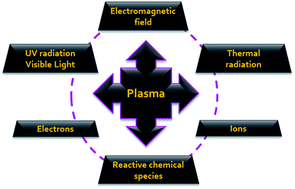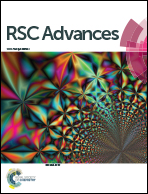Formation of reactive nitrogen species including peroxynitrite in physiological buffer exposed to cold atmospheric plasma†
Abstract
Cold Atmospheric Plasmas (CAPs) or Non Thermal Plasmas (NTPs) are increasingly used for biomedical applications. Herein, we studied the interactions of such CAPs, typically atmospheric ionization waves produced in a helium–nitrogen mixture (He/1% N2) with a commonly used physiological liquid in biology, e.g. Phosphate Buffered Saline solution (PBS) at pH 7.4. Optical Emission Spectroscopy (OES) of the plasma phase revealed the formation in the He/1% N2 CAP of nitric oxide NO and hydroxyl HO˙ derivatives which can lead to numerous Reactive Oxygen and Nitrogen Species (RONS) after dissolution in the exposed PBS. Chemical changes in solution were first assessed by conductimetry and pHmetry; these experiments showed that an evaporation of the solution occurred under gas exposition and was amplified by the CAPs, being mostly related to the interaction between the ionization wave and the gas flow. Further, UV-visible absorption spectroscopy was used to identify and quantify long-lived RONS, namely nitrite (NO2−), nitrate (NO3−), as well as a short-lived species, i.e. peroxynitrite anion (ONOO−). The production in physiological solution of ONOO− under CAP exposure is demonstrated for the first time, based on experiments at two pH conditions (7.4 and 12) and on the analysis of decomposition kinetics of this unstable species. The combination of complementary physico-chemical techniques allows to decipher the complex reactivity of CAPs from the plasma phase to the liquid phase.


 Please wait while we load your content...
Please wait while we load your content...